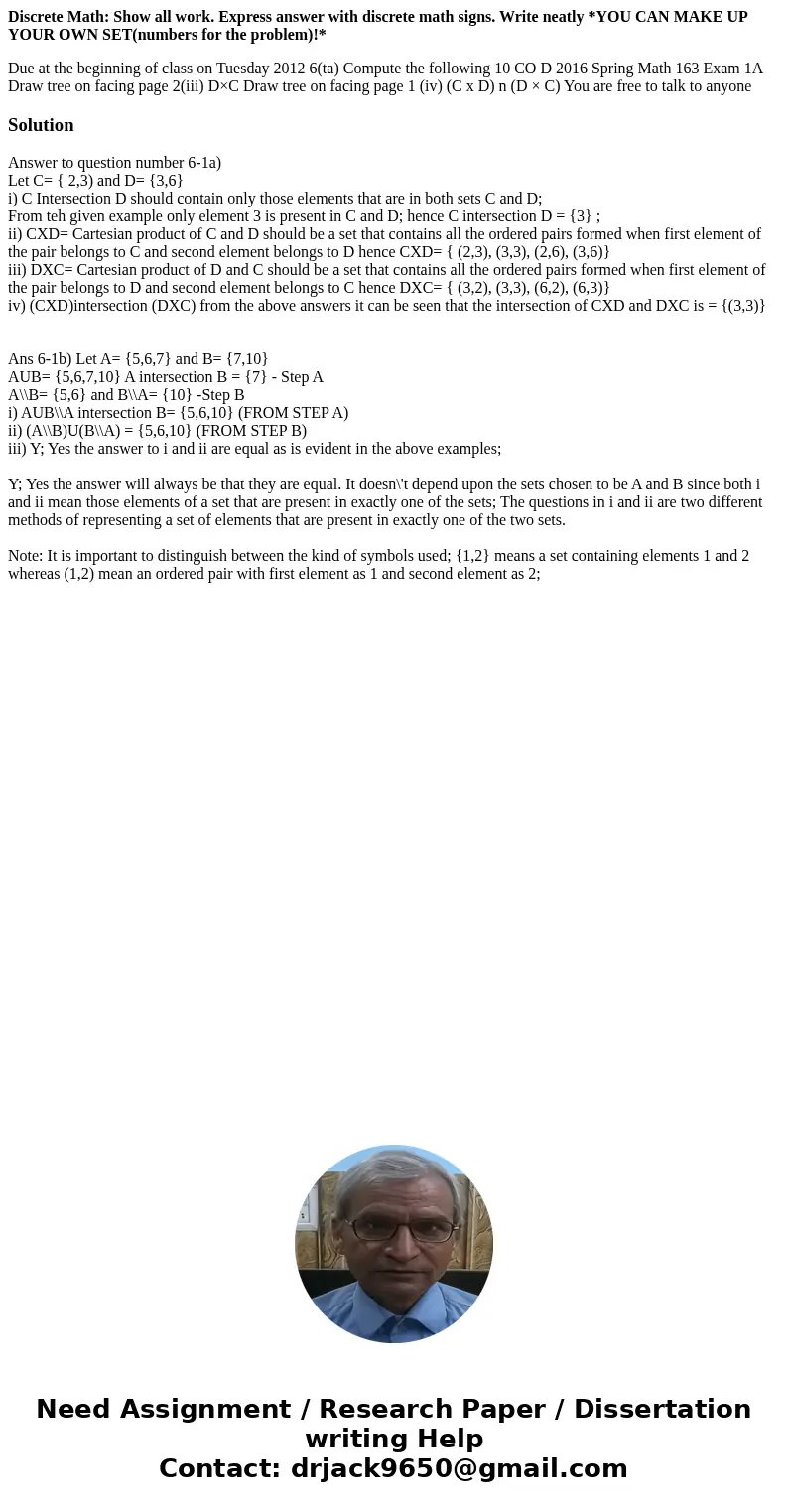Discrete Math Show all work Express answer with discrete mat
Discrete Math: Show all work. Express answer with discrete math signs. Write neatly *YOU CAN MAKE UP YOUR OWN SET(numbers for the problem)!*
Due at the beginning of class on Tuesday 2012 6(ta) Compute the following 10 CO D 2016 Spring Math 163 Exam 1A Draw tree on facing page 2(iii) D×C Draw tree on facing page 1 (iv) (C x D) n (D × C) You are free to talk to anyoneSolution
Answer to question number 6-1a)
Let C= { 2,3) and D= {3,6}
i) C Intersection D should contain only those elements that are in both sets C and D;
From teh given example only element 3 is present in C and D; hence C intersection D = {3} ;
ii) CXD= Cartesian product of C and D should be a set that contains all the ordered pairs formed when first element of the pair belongs to C and second element belongs to D hence CXD= { (2,3), (3,3), (2,6), (3,6)}
iii) DXC= Cartesian product of D and C should be a set that contains all the ordered pairs formed when first element of the pair belongs to D and second element belongs to C hence DXC= { (3,2), (3,3), (6,2), (6,3)}
iv) (CXD)intersection (DXC) from the above answers it can be seen that the intersection of CXD and DXC is = {(3,3)}
Ans 6-1b) Let A= {5,6,7} and B= {7,10}
AUB= {5,6,7,10} A intersection B = {7} - Step A
A\\B= {5,6} and B\\A= {10} -Step B
i) AUB\\A intersection B= {5,6,10} (FROM STEP A)
ii) (A\\B)U(B\\A) = {5,6,10} (FROM STEP B)
iii) Y; Yes the answer to i and ii are equal as is evident in the above examples;
Y; Yes the answer will always be that they are equal. It doesn\'t depend upon the sets chosen to be A and B since both i and ii mean those elements of a set that are present in exactly one of the sets; The questions in i and ii are two different methods of representing a set of elements that are present in exactly one of the two sets.
Note: It is important to distinguish between the kind of symbols used; {1,2} means a set containing elements 1 and 2 whereas (1,2) mean an ordered pair with first element as 1 and second element as 2;

 Homework Sourse
Homework Sourse